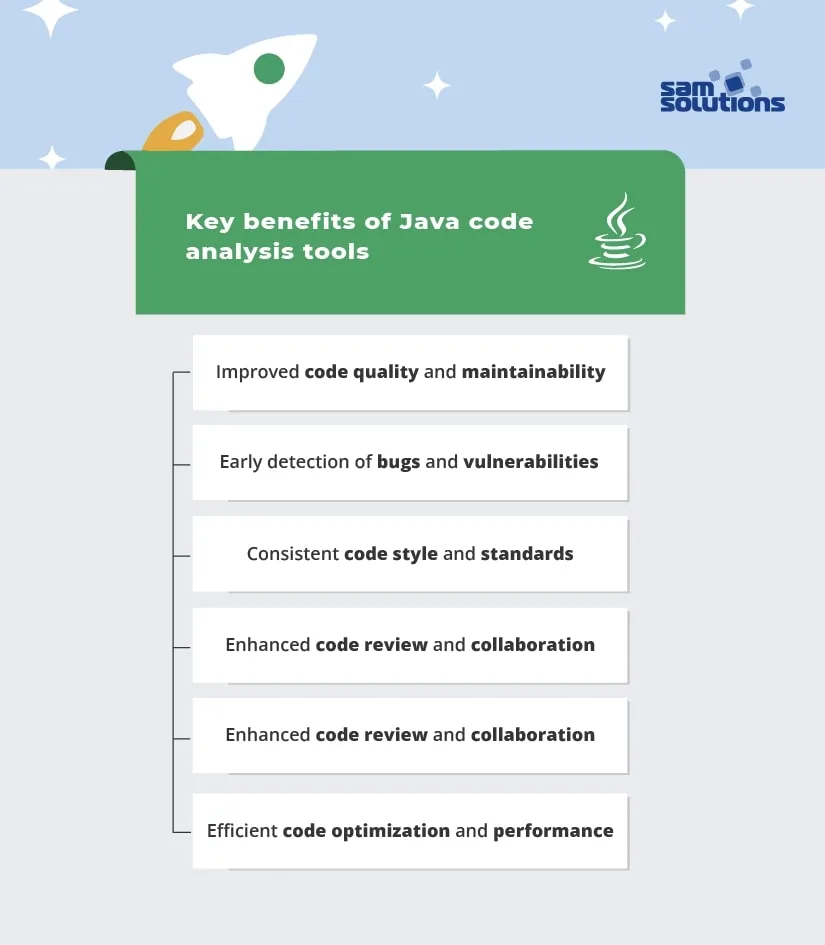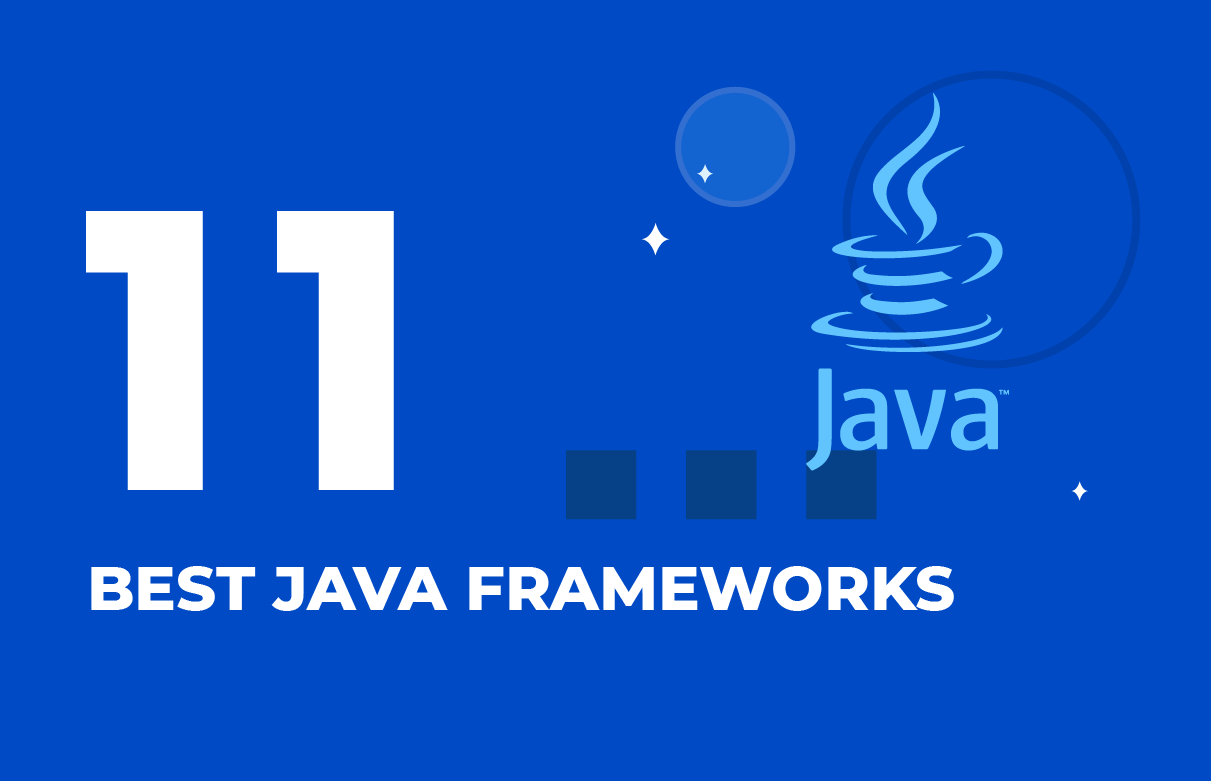For seamless software performance, ensuring impeccable code quality is paramount. Code analysis, a pivotal practice, serves as the compass guiding your digital journey from the earliest stages of the software development life cycle to the deployment of the final product.
Java code analysis tools play a crucial role in software development, offering a wide range of benefits that contribute to the ultimate success of projects. These tools are essential components of the development process, assisting developers in producing high-quality apps and improving their collaboration and productivity levels.
What Is Code Analysis?
Code analysis denotes the process of checking the written code in line with the established programming standards. Software specialists can review the code manually or use special automated tools. If the team chooses static analysis, then the specialists review the code without code execution. In the case of dynamic analysis, the team runs the code and checks the quality of the process.
The analysis ensures that the team finds and fixes the technical issues before they cause any trouble. With the help of high-quality assessment, your team can make strong, safe, and problem-free software. It helps catch mistakes, follow the pre-set rules, and improve performance speed.
Embracing proper analysis empowers your team to craft robust, secure, and high-performing software. From nifty bug-spotting to aligning with industry standards, it paves the way for seamless collaboration, reduced technical debt, and accelerated innovation.

What Are the Key Benefits of Using Java Code Analysis Tools?
Here, we dig deeper into the key benefits of incorporating Java analysis tools into the development workflow:
Improved code quality and maintainability
One of the fundamental advantages of using Java code analysis tools is their ability to improve the app quality and maintainability. These tools thoroughly analyze the codebase and identify various issues, such as code smells and redundant coding, and highlight the potential areas of improvement. By solving these issues, developers can write cleaner, more readable, and maintainable app.
Early detection of bugs and vulnerabilities
The analysis tools excel at detecting bugs, security vulnerabilities, and potential runtime errors before they lead to significant problems. This proactive identification prevents critical issues from surfacing post-release. Therefore, these tools forestall user dissatisfaction and costly remediation efforts. These tools contribute to a more reliable and secure end product as they allow quick identification of the problems during the development phase.
Consistent code style and standards
As development teams grow and codebases expand, maintaining consistent code style and adhering to coding standards becomes progressively challenging. The analysis tools offer a solution by enforcing coding guidelines and formatting standards. This consistency improves readability and comprehension. Given this, developers understand each other’s code better and can collaborate more effectively.
Enhanced code review and collaboration
The reviews are vital for high quality, but they can sometimes be time-consuming, especially when dealing with a large codebase. Java code checking tools streamline the review process by pinpointing potential issues. This allows reviewers to focus on higher-level aspects such as design and architecture, saving both their time and effort.
Efficient code optimization and performance
In performance-critical applications, identifying and addressing bottlenecks and memory leaks is essential. The analysis tools excel in identifying areas of coding that could be optimized for better performance. By spotting inefficient algorithms or resource-intensive operations, these tools assist developers in improving UX and software efficiency.

Code Analysis Tools For Java
Checkstyle
Checkstyle is a widely used Java code quality tool. This tool can check if the source code complies with the required standards. Therefore, it helps Java software engineers to adhere to the predefined rules. This automation tool can free the specialists from boring work and allow them to focus on more creative tasks. Checkstyle is a great choice if the team has to deal with a huge codebase and enforced standards of code.
PMD
PMD is another Java analysis tool. Renowned for its versatility and capability to automatically identify potential bugs, code smells, and performance bottlenecks, PMD significantly enhances the software quality. By seamlessly integrating into development pipelines, PMD empowers teams to detect issues early, enhance collaboration, and produce reliable, optimized Java app.
SpotBugs
SpotBugs is a prominent Java analysis tool, embodying excellence in IT practices. Armed with an extensive array of predefined rules, it enforces coding standards and industry best practices. SpotBugs can identify numerous bug patterns, including null pointer dereferences, incorrect implementation of libraries and deadlocks, infinite recursive loops, etc.
SonarQube
SonarQube stands as a paramount analysis tool in the IT domain. SonarQube offers a range of special rules and metrics, enhancing software maintainability and reliability. The wide range of SonarQube’s capabilities allows the continuous inspection of quality. With this tool, software engineers can carry out an effective automatic review with the help of static analysis to detect bugs and code smells.
FindBugs
The forte of FindBugs lies in the effective identification of bugs, potential vulnerabilities, and flaws. The tool classifies bugs into several types according to their level of importance, giving developers a hint about their possible impact. With a comprehensive set of rules, it ensures compliance with the industry’s best practices and standards.
JaCoCo
JaCoCo serves as a Java code coverage library. Some other instruments and IDEs like Eclipse or Gradle have JaCoCo included in their systems. JaCoCo offers insights into test coverage by tracking executed code during testing. When dealing with large-scale projects, JaCoCo can guarantee high-performance functioning with minimal runtimes. Plus, its clearly-cut modular design streamlines the process of developing customized plugins.
Error Prone
Error Prone’s primary strength lies in detecting and preventing common coding errors at compile time. It can hook into the standard build so that the software engineers can run it by default. The tool augments the analysis and enables engineers to reveal more bugs before they cause any irreparable harm. Error Prone immediately informs developers about the mistakes they made and recommends how to fix them.
jQAssistant
jQAssistant excels at architectural and structural analysis. Employing graph-based querying, it allows developers to validate module dependencies, identify design flaws, and enforce coding standards. Besides, it helps in enforcing naming conventions, separating APIs and implementation packages, and detecting such issues as cycling dependencies. As a result, jQAssistant empowers teams to keep to clean architectures, enhance collaboration, and deliver high-quality Java app.
Qodana
Qodana is an innovative tool that streamlines the analysis process. One of the major Qodana’s strengths is its convenient and simple interface. Other prominent features include data flow checkups, quick fixing, inspection for CI, etc. With Qodana software engineers can easily identify and solve issues. Thanks to its robust functionalities you needn’t worry that any bug will be left unnoticed.
Why Choose Java Development and Code Analysis by SaM Solutions?
Due to our commitment to excellence and proven track record, SaM Solutions is the optimal choice for Java development and analysis. With a team of seasoned Java developers, we possess the 30-year expertise of delivering robust and innovative solutions tailored to the unique requirements of our customers.
By smooth integration of advanced tools and methodologies, we ensure that each project’s codebase adheres to the highest standards of quality, maintainability, and security.
Choosing SaM Solutions means embracing consistent style and industry-best practices. We stand out for our dedication to continuous improvement: our team evolves along with ever-transforming Java technologies, staying updated on the latest trends and technologies.
SaM Solutions is ready to become your partner in achieving Java development excellence. By leveraging our expertise in both development and analysis, you secure a future-proof and high-performing software solution. Trust us to drive your project’s success with the help of our comprehensive Java expertise.
Conclusion
The role of code analysis tools for Java can not be overrated. The impact of these instruments goes far beyond surface-level evaluation. As they enhance app quality and readability, these tools have a profound influence, reducing testing and debugging efforts.
The incorporation of analysis tools marks a strategic investment, fostering smoother collaboration, shorter release cycles, and confidence in the final product’s reliability. With the abundance of Java analysis tools available, any Java development project can benefit from their use.




























 5 Reasons Why Your Business Needs a Mobile eCommerce Application
5 Reasons Why Your Business Needs a Mobile eCommerce Application Using Salesforce to Improve Your Sales Pipeline: Five Tips
Using Salesforce to Improve Your Sales Pipeline: Five Tips Cross-Platform Mobile Development: Five Best Frameworks
Cross-Platform Mobile Development: Five Best Frameworks 10 Best Web Development Frameworks in 2024
10 Best Web Development Frameworks in 2024 How to Develop Custom Accounting Software
How to Develop Custom Accounting Software













 Why React and Node.js Are the Top Technologies for Creating High-Performance Web Apps in 2024
Why React and Node.js Are the Top Technologies for Creating High-Performance Web Apps in 2024 10 Best IoT Platforms for 2024
10 Best IoT Platforms for 2024 Top 20 Latest Trends in the Ecommerce Industry in 2024
Top 20 Latest Trends in the Ecommerce Industry in 2024 Top 10 Most Popular Programming Languages in 2024
Top 10 Most Popular Programming Languages in 2024
Code analysis tools aren’t just for large projects. Even in small codebases, they help maintain readability and quality. They’re akin to having an ever-vigilant mentor nudging you towards best practices.
One aspect often overlooked is how code analysis tools aid in onboarding new team members. As a team lead I noticed that with these tools newcomers grasp coding standards faster and become productive contributors sooner.
The insights provided by code analysis tools foster team collaboration. We can have informed discussions based on data, rather than opinions. It’s like having a loyal code review partner always by your side!
While SonarQube is fantastic, I also rely heavily on Checkstyle. Its focus on coding style and conventions ensures our team’s code looks and feels consistent. This tool has prevented a few disasters for us.
My personal favorite among code analysis tools has to be SonarQube. Its comprehensive coverage, from code smells to security vulnerabilities, makes it a go-to for me.
Code analysis tools in the Java ecosystem are like trusty companions, offering a safety net while coding. I appreciate how they find hidden bugs and enforce the preferred coding standards. They save time and help maintain a consistent codebase.
As a seasoned Java developer, I’ve had the pleasure of using various code analysis tools. They’ve been invaluable in enhancing code quality and catching potential issues early. These tools truly are a lifesaver!